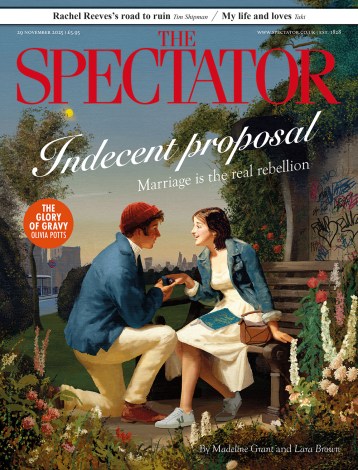Wine-making can have a tragic dimension, and rarely more so than with Italian Pinot Nero: that is, Pinot Noir. It is often made amid blood-soaked landscapes, where tragedy regularly arose out of pretensions to grandeur. If you wish to read an overview of modern Italian history in order to understand why, the place to start is David Gilmour’s The Pursuit of Italy.
Despite the quality of the prose, mention Sir David’s book even to thoughtful Italians, and you might be surprised by the lack of enthusiasm. He applies a revisionist scalpel to national myths, without benefit of anaesthetic.
The territories which the Italians did gain proved ideal for growing Pinot Noir
One might have assumed that he would share the 19th–century Liberals’ Gladstonian enthusiasm for the Ris-orgimento. Not so. He is sceptical about the House of Savoy and indeed finds good words to say about the Kingdom of the Two Sicilies. Gladstonedescribed it as the negation of God erected into a system of government. Not so, says David Gilmour. That was more the Papal States. When its officials were driven out, many of them seem to have found refuge in Ireland, where they took charge of Catholic children’s education.
Starting with Garibaldi, there was often an opéra bouffe element to Italian self-assertion. This reached a climax during the first world war. By 1915, it should have been clear that there would be no re-enactment of Bismarck’s surgical-strike wars. This one was turning into a quagmire of human hopes: a second fall of man. Yet in Rome there was a feeling that Italy had to join in. France and Britain bribed the Italians with offers of Austrian territory: Italy took the bait.
Up in the Alto Adige, the Italians lost hundreds of thousands of troops, many of whom died of cold. They were ludicrously badly equipped and confronted the unrelenting Alpine landscape armed with little more than raw bravery. The snows and the mountains prevailed.
This had two long-term consequences. First, many Italians became war-averse. Mussolini – more opéra bouffe – was able to send troops who fought adequately in African colonial wars. But when he decided to rush to the aid of the victor and commit his forces to battle against European armies, the results were comical, ending with surrenders in industrial quantities. The Italians lost their second world war campaigns after 1915 on the Austrian front.
Second, the territories which the Italians did gain proved ideal for growing Pinot Noir. A combination of German rigour, Austrian traditions and Italian flair has produced excellent wines. A German meister, Franz Haas, inspired the locals, telling them that they must strive to emulate the Burgundians.
Pinot Noir was long regarded as a truculent grape. In Burgundy, it has produced some of the greatest wine ever made. In lesser regions, vignerons approached it at their peril. But in recent decades, this has ceased to be true. While there will never be substitutes for the glories of the DRC or Armand Rousseau, wine-makers in California, South Africa and New Zealand have produced thoroughly decent bottles. The same is true in the Trentino, the Südtirol and the Alto Adige, and these wines are reasonably priced: as good value as any red wine that I can think of.
A Girlan Patricia 2018 was a delicious example, simultaneously subtle and robust. Even if Italian Pinot Noir does not justify the horrors of 1915-1918, it is some compensation.






Comments